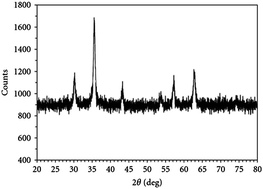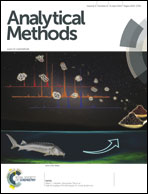Chemical composition of the essential oils from the hulls of Pistacia vera L. by using magnetic nanoparticle-assisted microwave (MW) distillation: comparison with routine MW and conventional hydrodistillation
Abstract
In this paper, classical hydrodistillation (HD) and microwave assisted hydrodistillation (MAHD) are used for extraction of Pistachio hull essential oil combined with subsequent gas chromatographic mass spectrometric (GC-MS) determination. The major focus is on synthesis of amine-functionalized magnetite nanoparticles (AFMN) and their effects on essential oils from quantitative and qualitative points of view. In addition, experimental parameters such as power and time are optimized in the proposed and improved MAHD technique. The obtained results show that the quantity of the extracted essence is negligible both in the presence and absence of AFMN in the HD method. However, the essential oil yield was significantly increased when using MAHD method particularly in the presence of AFMN, in which more yield (0.8%) and more chemical diversity (25 compounds) were obtained. Generally, the most important compounds in the extracted essential oil in the presence of magnetic nanoparticles included: α-pinene (31.5%), α-terpinolene (20.2%), myrcene (11.5%), pinocarvone (6.2%) and camphene (4.8%). On the other hand, the most important compounds in the extracted compounds in the absence of magnetic nanoparticles were found to be α-pinene (31.8%), α-terpinolene (20.3%), myrcene (12.2%), pinocarvone (6.2%) and camphene (4.7%). According to the results, simultaneous use of microwave and nanoparticles significantly increase the quality and quantity of volatile essential oils of Pistacia vera.


 Please wait while we load your content...
Please wait while we load your content...